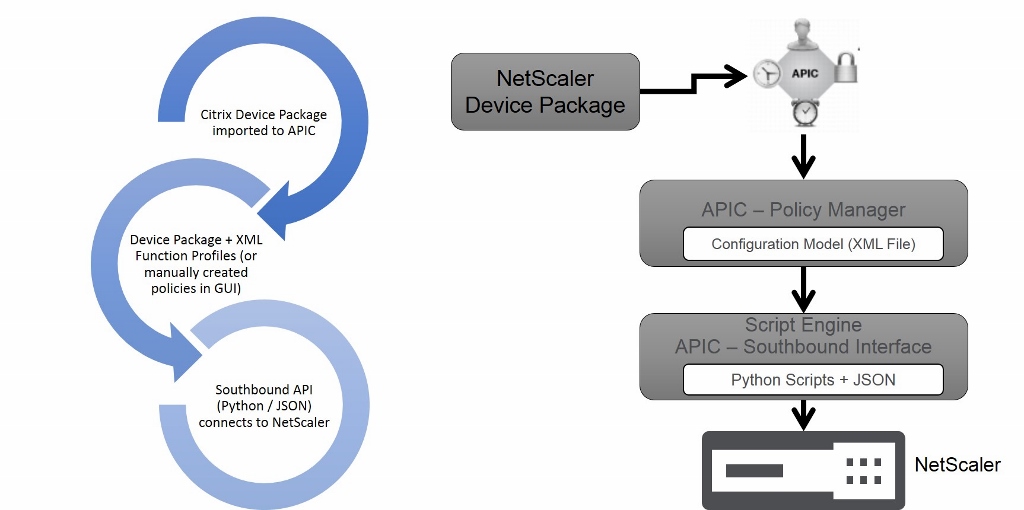As data center networks have grown to encompass thousands of devices, existing network architectures have proven inadequate for rapid deployment of applications and unable to keep up with the agility requirements of today’s business environment.
Software Defined Networking (SDN) has been promoted as the solution for dynamically provisioning and automatically configuring network resources as applications are deployed. Recently SDN has moved beyond theory to practical reality, as open standards and growing interoperability among vendors are driving rollouts of new capabilities.

Evolving to an Application Centric Infrastructure
With ACI Cisco envisions a distributed, policy driven approach to SDN that relies on the concept of declarative control. “Declarative control dictates that each object is asked to achieve a desired state and makes a promise to reach this state, without being told precisely how to do so,” according to Cisco. As a result, “underlying objects handle their own configuration state changes and are responsible only for passing exceptions or faults back to the control system. This approach reduces the burden and complexity of the control system and allows greater scale.”
To enable this new policy driven approach Cisco led the effort to create the OpFlex open policy protocol, which has been submitted as an Internet Engineering Task Force draft and was co-developed with Intel, Microsoft, Red Hat, Citrix, F5, Canonical, and Embrane. OpFlex stems from Cisco’s Application Centric Infrastructure vision and strategy. In Cisco’s view, earlier efforts to implement SDN were limited because they mimic an old model of networking that focused on individual networking elements.
In the ACI realm, network, compute, and storage operate as one high-performance resource pool that can be provisioned instantly and automatically according to the needs of the application and related IT policies with security pervasive throughout. It will provide a single point of management for the integrated needs of application, network and security administrators.
Cisco ACI is built on a network fabric designed to support management automation, programmatic policy, and dynamic “workload-anywhere” models. At its heart is the Cisco Application Policy Infrastructure Controller (APIC), a centralized policy management and control point for the entire infrastructure. This is where other services are tied in to the ACI architecture.
The Role of Application Delivery Controllers
As organizations roll out ACI-based SDNs, they will need to implement a more efficient and effective approach to load balancing, to distribute incoming traffic among servers hosting the same application and to prevent any application server from becoming a single point of failure. As web sites moved beyond static content to dynamic application delivery, users need to be connected to application servers based on a variety of criteria using policies and advanced application-layer knowledge to support business requirements. This application-aware distribution capability is a key element in the ACI architecture.
Citrix introduced its NetScaler line of products to provide a more efficient and effective approach, replacing the old server load balancer with an Application Delivery Controller (ADC). The Citrix NetScaler ADC combines Layer 4 through 7 load balancing, high-speed data compression, content caching, SSL acceleration, application flow visibility, and a powerful application firewall into a single, easy-to-use platform.
NetScaler leverages the Cisco APIC to programmatically automate network provisioning and control based on application requirements and policies for both datacenter and enterprise environments. “This gives our customers what they have wanted, which is to be able to run load balancers and firewalls in line with their application servers and spin them up and stamp out a configuration,” says Steve Shah, senior director of product management at Citrix. “They don’t have to worry about individually configuring thousands of load balancers or firewalls in the process because they can automate two or three configurations.”
Cisco APIC can dynamically distribute new policies to the ADC in minutes, without requiring the network be manually changed. Integration between the Cisco APIC controller and the NetScaler ADC is achieved through REST- based open APIs. A NetScaler “Device Package” imported by the APIC controller enables it to perform detailed feature level configuration of NetScaler ADC services. This enables consistent automation and orchestration of critical services required in bringing up applications in a fast, secure and reliable manner. Moreover, these applications can run on any device type and anywhere in the customer’s environment without causing disruption to the network.
ACI Deployment-Ready Options
ACI moves SDN beyond theory to advanced implementation, while accommodating existing infrastructure. On a practical level, virtual or physical servers on existing Cisco Nexus networks can participate in the ACI fabric using the Cisco APIC to provision policies and enable ACI forwarding mechanisms across both the new ACI (Nexus 9000-based) and existing Nexus fabrics (Nexus 3000-7000).
NetScaler and ACI integration provides several key benefits to data centers: • NetScaler physical and virtual appliances can be configured from one location, automatically • Changes to configurations are automatically pushed out to all appropriate NetScaler appliances • Customers can utilize the advanced capabilities of NetScaler, for better application delivery
NetScaler is the Failsafe Path to ACI
Whether ACI is in your immediate future or still a distant goal, the demand for 100% application availability, enhanced end-to-end performance, advanced application-layer attack protection, and improved server efficiency is here now and Citrix NetScaler is the logical choice.
Citrix NetScaler is the only application delivery controller that fully integrates into Cisco’s Unified Fabric. The Citrix NetScaler is recommended by Cisco as a replacement product for the end-of-life Cisco ACE and provides a smooth migration path for Cisco ACE, GSS and CSS customers.
NetScaler comprises tightly integrated physical and virtual appliances that provide core load-balancing capabilities and deliver the highest levels of security and performance for today’s business critical Web applications, while providing a foundation for tomorrow’s Application Centric Infrastructures.
For more information please see, Citrix and Cisco Partnership

No comments:
Post a Comment